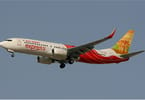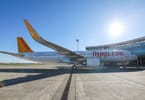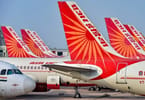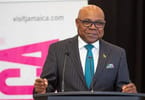ORLANDO, FL – Despite vocal opposition from a bipartisan Florida Congressional delegation to the Federal Aviation Administration’s plan to separate radar and tower functions at Orlando International Airport, the FAA still plans to move forward this Sunday, January 4, 2009. That means five more days until the tower operation becomes staffed with less experienced controllers, the radar operation becomes unable to staff without forced overtime for fatigued controllers, and overall training programs are degraded to a level that does not conform to DOT inspector general recommendations.
Among those opposed to the plan are House Transportation and Infrastructure Committee ranking member John Mica, R-Florida; Sen. Bill Nelson, D-Florida; Congresswoman Corrine Brown, D-Florida; and Congressman Jeff Miller, R-Florida, as well as 11 other members of the Florida Congressional delegation.
Today, that opposition is being joined by two of the newly-elected members of Congress soon to be sworn in – Alan Grayson and Suzanne Kosmas.
Said Representative-elect Grayson: “The FAA’s move to deconsolidate the air traffic control facility at MCO is part of a disturbing trend at the FAA to impose such actions unilaterally, without due consideration of the views and interests of air traffic controllers and other FAA facility stakeholders. This, in turn, has led to contemplated Congressional action like H.R. 2443, which should not be necessary, and would not be necessary, if labor-management relations were better. The ultimate concern of the air traffic control system is not economy, but rather, safety. In the spirit of cooperation that President-elect Barack Obama is trying to evoke, I call on FAA management to shun confrontation with employee representatives and to find ways to work cooperatively for the benefit of the flying public.”
Said Representative-elect Kosmas: “The public’s safety should always be the highest priority of our air traffic control system. I urge the FAA to delay its decision until there is an official deconsolidation process in place so impact on safety can be more fully examined.”
In the bipartisan Congressional letter earlier this month, addressed to FAA Air Traffic Organization chief operating officer Hank Krakowski, the delegation aired its objections and asked that the agency postpone deconsolidation plans until Congress had a full chance to complete work on an FAA reauthorization bill.
To read the full letter, please click here: http://www.natca.org/assets/Documents/mediacenter/OrlandoLetter.pdf
Splitting a busy facility such as Orlando involves separating the tower portion of the facility from the radar portion, or TRACON (Terminal Radar Approach Control). The tower is primarily responsible for ground control and clearing aircraft for arrivals and departures. It depends greatly on the TRACON, the portion of the facility primarily responsible for sequencing aircraft in the airport’s airspace to land and for aircraft departing from the airport, which hand-offs to an air traffic control center responsible for higher-altitude traffic. Both portions of the facility depend highly upon one another and air traffic operations are improved by controllers with experience in both areas. Under this FAA plan, controllers will no longer have that dual experience.
When deconsolidating, the tower could cause such a drastic separation and degradation of air traffic controller experience, it begs to be asked: why is the FAA moving forward with no regard whatsoever to the overwhelming opposition it is facing?
One theory comes from NATCA Southern Regional Vice President Victor Santore: “Splitting Orlando is only being done to give the illusion that the FAA is converting trainees into instant air traffic controllers. Orlando is very poorly staffed and by requiring those trainees to be certified to only work tower or radar operations creates the image of a properly staffed facility overnight. The FAA is using fuzzy math to give the flying public false reassurance. Splitting tower and radar functions at Orlando will be detrimental to the safety of the flying public. Air traffic controllers realize this and so does Congress.”
WHAT TO TAKE AWAY FROM THIS ARTICLE:
- “The FAA’s move to deconsolidate the air traffic control facility at MCO is part of a disturbing trend at the FAA to impose such actions unilaterally, without due consideration of the views and interests of air traffic controllers and other FAA facility stakeholders.
- It depends greatly on the TRACON, the portion of the facility primarily responsible for sequencing aircraft in the airport’s airspace to land and for aircraft departing from the airport, which hand-offs to an air traffic control center responsible for higher-altitude traffic.
- In the spirit of cooperation that President-elect Barack Obama is trying to evoke, I call on FAA management to shun confrontation with employee representatives and to find ways to work cooperatively for the benefit of the flying public.






















